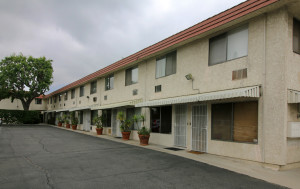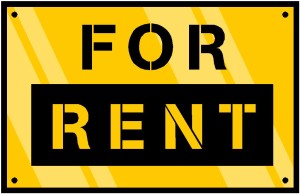If a tenant believes that his or her rental unit needs repairs, and that the landlord is responsible for the repairs under the implied warranty of habitability, the tenant should notify the landlord. Since rental units typically are business investments for landlords, most landlords want to keep them safe, clean, attractive, and in good repair.
It’s best for the tenant to notify the landlord of damage or defects by both a telephone call and a letter. The tenant should specifically describe the damage or defects and the required repairs in both the phone call and the letter. The tenant should date the letter and keep a copy to show that notice was given and what it said. If the tenant gives notice to the landlord by e-mail or fax, the tenant should follow up with a letter. (See “Giving the landlord notice“.)
The tenant should send the letter to the landlord, manager, or agent by certified mail with return receipt requested. Sending the notice by certified mail is not required by law, but is a very good idea. Or, the tenant (or a friend) may personally deliver the notice to the landlord, manager, or agent and ask for a receipt to show that the notice was received. The tenant should keep a copy of the notice and the receipt, or some other evidence that the notice was delivered. (See “Giving the landlord notice“.)
If the landlord doesn’t make the requested repairs, and doesn’t have a good reason for not doing so, the tenant may have one of several remedies, depending on the seriousness of the repairs. These remedies are discussed in the rest of this section. Each of these remedies has its own risks and requirements, so the tenant should use them carefully.
The “repair and deduct” remedy
The “repair and deduct” remedy allows a tenant to deduct money from the rent, up to the amount of one month’s rent, to pay for repair of defects in the rental unit.156 This remedy covers substandard conditions that affect the tenant’s health and safety, and that substantially breach the implied warranty of habitability.157 (See discussion of the implied warranty of habitability.) Examples might include a leak in the roof during the rainy season, no hot running water, or a gas leak.
As a practical matter, the repair and deduct remedy allows a tenant to make needed repairs of serious conditions without filing a lawsuit against the landlord. Because this remedy involves legal technicalities, it’s a good idea for the tenant to talk to a lawyer, legal aid organization, or tenants’ association before proceeding.
The basic requirements and steps for using the repair and deduct remedy are as follows:
- 1. The defects must be serious and directly related to the tenant’s health and safety.158
- 2. The repairs cannot cost more than one month’s rent.
- 3. The tenant cannot use the repair and deduct remedy more than twice in any 12-month period.
- 4. The tenant or the tenant’s family, guests, or pets must not have caused the defects that require repair.
- 5. The tenant must inform the landlord, either orally or in writing, of the repairs that are needed. (See “Giving the landlord notice“.)
- 6. The tenant must give the landlord a reasonable period of time to make the needed repairs.
- What is a reasonable period of time? This depends on the defects and the types of repairs that are needed. The law usually considers 30 days to be reasonable, but a shorter period may be considered reasonable, depending on the situation. For example, if the furnace is broken and it’s very cold outdoors, two days may be considered reasonable (assuming that a qualified repair person is available within that time period).
- 7. If the landlord doesn’t make the repairs within a reasonable period of time, the tenant may either make the repairs or hire someone to do them. The tenant may then deduct the cost of the repairs from the rent when it is due. The tenant should keep all receipts for the repairs.
- It’s a good idea, but not a legal requirement, for the tenant to give the landlord a written notice that explains why the tenant hasn’t paid the full amount of the rent. The tenant should keep a copy of this notice.
Risks: The defects may not be serious enough to justify using the repair and deduct remedy. In that event, the landlord can sue the tenant to recover the money deducted from the rent, or can file an eviction action based on the nonpayment of rent. If the tenant deducted money for repairs not covered by the remedy, or didn’t give the landlord proper advance notice or a reasonable time to make repairs, the court can order the tenant to pay the full rent even though the tenant paid for the repairs, or can order that the eviction proceed.
The landlord may try to evict the tenant or raise the rent because the tenant used the repair and deduct remedy. This kind of action is known as a “retaliatory eviction” (see section on Retaliatory Eviction). The law prohibits this type of eviction, with some limitations.159
The “abandonment” remedy
Instead of using the repair and deduct remedy, a tenant can abandon (move out of) a defective rental unit. This remedy is called the” abandonment” remedy. A tenant might use the abandonment remedy where the defects would cost more than one month’s rent to repair,160 but this is not a requirement of the remedy. The abandonment remedy has most of the same requirements and basic steps as the repair and deduct remedy.161
In order to use the abandonment remedy, the rental unit must have substandard conditions that affect the tenant’s health and safety, and that substantially breach the implied warranty of habitability.162 (See discussion of the implied warranty of habitability.) If the tenant uses this remedy properly, the tenant is not responsible for paying further rent once he or she has abandoned the rental unit.163
The basic requirements and steps for lawfully abandoning a rental unit are:
- 1. The defects must be serious and directly related to the tenant’s health and safety.164
- 2. The tenant or the tenant’s family, guests, or pets must not have caused the defects that require repair.
- 3. The tenant must inform the landlord, either orally or in writing, of the repairs that are needed. (See “Giving the landlord notice,” below).
- 4. The tenant must give the landlord a reasonable period of time to make the needed repairs.
- What is a reasonable period of time? This depends on the defects and the types of repairs that are needed. The law usually considers 30 days to be reasonable, but a shorter period may be considered reasonable, depending on the circumstances. For example, if tree roots block the main sewer drain and none of the toilets or drains work, a reasonable period might be as little as one or two days.
- 5. If the landlord doesn’t make the repairs within a reasonable period of time, the tenant should notify the landlord in writing of the tenant’s reasons for moving and then actually move out. The tenant should return all the rental unit’s keys to the landlord. The notice should be mailed or delivered as explained in “Giving the landlord notice” below. The tenant should keep a copy of the notice.
- It’s a good idea, but not a legal requirement, for the tenant to give the landlord written notice of the tenant’s reasons for moving out. The tenant’s letter may discourage the landlord from suing the tenant to collect additional rent or other damages. A written notice also documents the tenant’s reasons for moving, which may be helpful in the event of a later lawsuit. If possible, the tenant should take photographs or a video of the defective conditions or have local health or building officials inspect the rental unit before moving. The tenant should keep a copy of the written notice and any inspection reports and photographs or videos.
Risks: The defects may not affect the tenant’s health and safety seriously enough to justify using the remedy. The landlord may sue the tenant to collect additional rent or damages.
The “rent withholding” remedy
A tenant may have another option for getting repairs made – the “rent withholding” remedy.
By law, a tenant is allowed to withhold (stop paying) some or all of the rent if the landlord does not fix serious defects that violate the implied warranty of habitability.165 (See discussion of the implied warranty of habitability.) In order for the tenant to withhold rent, the defects or repairs that are needed must be more serious than would justify use of the repair and deduct and abandonment remedies. The defects must be substantial – they must be serious ones that threaten the tenant’s health or safety.166
The defects that were serious enough to justify withholding rent in Green v. Superior Court167 are listed below as examples:
- Collapse and nonrepair of the bathroom ceiling.
- Continued presence of rats, mice, and cockroaches.
- Lack of any heat in four of the apartment’s rooms.
- Plumbing blockages.
- Exposed and faulty wiring.
- An illegally installed and dangerous stove.
In the Green case, all of these defects were present, and there also were many violations of the local housing and building codes. In other situations, the defects that would justify rent withholding may be different, but the defects would still have to be serious ones that threaten the tenant’s health or safety.
In order to prove a violation of the implied warranty of habitability, the tenant will need evidence of the defects that require repair. In the event of a court action, it is helpful to have photographs or videos, witnesses, and copies of letters informing the landlord of the problem.
Before the tenant withholds rent, it is a good idea to check with a legal aid organization, lawyer, housing clinic, or tenant program to help determine if rent withholding is the appropriate remedy.
The basic requirements and steps for using the rent withholding remedy are:
- 1. The defects or the repairs that are needed must threaten the tenant’s health or safety.168
- The The defects must be serious enough to make the rental unit uninhabitable. For example, see the defects described in the discussion of the Green case above.
- 2. The tenant, or the tenant’s family, guests, or pets must not have caused the defects that require repair.
- 3. The tenant must inform the landlord either orally or in writing of the repairs that are needed. (See “Giving the landlord notice,” below).
- 4. The tenant must give the landlord a reasonable period of time to make the repairs.
- What is a reasonable period of time? This depends on the defects and the type of repairs that are needed.
- 5. If the the landlord doesn’t make the repairs within a reasonable period of time, the tenant can withhold some or all of the rent. The tenant can continue to withhold the rent until the landlord makes the repairs.
- How much rent can the tenant withhold? While the law does not provide a clear test for determining how much rent is reasonable for the tenant to withhold, judges in rent withholding cases often use one of the following methods. These methods are offered as examples.
Percentage reduction in rent: The percentage of the rental unit that is uninhabitable is determined, and the rent is reduced by that amount. For example, if one of a rental unit’s four rooms is uninhabitable, the tenant could withhold 25 percent of the rent. The tenant would have to pay the remaining 75 percent of the rent. Most courts use this method.
Reasonable value of rental unit: The value of the rental unit in its defective state is determined, and the tenant withholds that amount. The tenant would have to pay the difference between the rental unit’s fair market value (usually the rent stated in the rental agreement or lease) and the rental unit’s value in its defective state.169
- 6. The tenant should save the withheld rent money and not spend it. The tenant should expect to have to pay the landlord some or all of the withheld rent.
- If the tenant withholds rent, the tenant should put the withheld rent money into a special bank account (called an escrow account). The tenant should notify the landlord in writing that the withheld rent money has been deposited in the escrow account, and explain why.
Depositing the withheld rent money in an escrow account is not required by law, but is a very good thing to do for three reasons.
First, as explained under “Risks” below, rent withholding cases often wind up in court. The judge usually will require the tenant to pay the landlord some reduced rent based on the value of the rental unit with all of its defects. Judges rarely excuse payment of all rent. Depositing the withheld rent money in an escrow account assures that the tenant will have the money to pay any “reasonable rent” that the court orders. The tenant will have to pay the rent ordered by the court five days (or less) from the date of the court’s judgment.
Second, putting the withheld rent money in an escrow account proves to the court that the tenant didn’t withhold rent just to avoid paying rent. If there is a court hearing, the tenant should bring rental receipts or other evidence to show that he or she has been reliable in paying rent in the past.
Third, most legal aid organizations and lawyers will not represent a tenant who has not deposited the withheld rent money in an escrow account.
Sometimes, the tenant and the landlord will be able to agree on the amount of rent that is reasonable for the time when the rental unit needed repairs. If the tenant and the landlord can’t agree on a reasonable amount, the dispute will have to be decided in court, or resolved in an arbitration or mediation proceeding (see section on Arbitration and Mediation).
Risks: The defects may not be serious enough to threaten the tenant’s health or safety. If the tenant withholds rent, the landlord may give the tenant an eviction notice (a three-day notice to pay the rent or leave). If the tenant refuses to pay, the landlord will probably go to court to evict the tenant. In the court action, the tenant will have to prove that the landlord violated the implied warranty of habitability.170
If the tenant wins the case, the landlord will be ordered to make the repairs, and the tenant will be ordered to pay a reasonable rent. The rent ordinarily must be paid five days or less from the date of the court’s judgment. If the tenant wins, but doesn’t pay the amount of rent ordered when it is due, the judge will enter a judgment for the landlord, and the tenant probably will be evicted. If the tenant loses, he or she will have to pay the rent, probably will be evicted, and may be ordered to pay the landlord’s attorney’s fees.
There is another risk of using rent withholding: if the tenant doesn’t have a lease, the landlord may ignore the tenant’s notice of defective conditions and seek to remove the tenant by giving him or her a 30-day or 60-day notice to move. This may amount to a “retaliatory eviction” (see section on Retaliatory Actions, Evictions and Discrimination).171 The law prohibits retaliatory evictions, with some limitations.172
Giving the landlord notice
Whenever a tenant gives the landlord notice of the tenant’s intention to repair and deduct, withhold rent, or abandon the rental unit, it’s best to put the notice in writing. The notice should be in the form of a letter, and can be typed or handwritten. The letter should describe in detail the problem and the repairs that are required. The tenant should sign and date the letter and keep a copy.173
The tenant might be tempted to send the notice to the landlord by e-mail or fax. The laws on repairs specify that the tenant may give the landlord notice orally or in writing, but do not mention e-mail or fax. To be certain that the notice complies with the law, the tenant should follow up any e-mailed or faxed notice with a letter describing the damage or defects and the required repairs.
The letter should be sent to the landlord, manager, or agent by certified mail (return receipt requested). Sending the letter by certified mail is not required by law, but is a very good idea. Or, the tenant (or a friend) may personally deliver the notice to the landlord, manager, or agent. The tenant should ask for a signed and dated receipt showing that the notice was received, or ask the landlord to date and sign (or initial) the tenant’s copy of the letter to show that the landlord received the notice. Whatever the method of delivery, it’s important that the tenant have proof that the landlord, or the landlord’s manager or agent, received the notice.
The copy of the letter and the receipt will be proof that the tenant notified the landlord, and also proof of what the notice said. Keep the copy of the letter and the receipt in case of a dispute with the landlord.
The landlord or agent may call the tenant to discuss the request for repairs or to schedule a time to make them. It’s a good idea for the tenant to keep notes of any conversations and phone calls about the request for repairs. During each conversation or immediately after it, the tenant should write down the date and time of the conversation, what both parties said, and the date and time that the tenant made the notes. Important: Neither the tenant nor the landlord can tape record a telephone conversation without the other party’s permission174
Tenant information
An occupant of residential property can invite another person onto the property during reasonable hours, or because of emergency circumstances, to provide information about tenants’ rights or to participate in a tenants’ association or an association that advocates tenants’ rights. The invited person cannot be held liable for trespass.175
Lawsuit for damages as a remedy
The remedies of repair and deduct, abandonment, and rent withholding allow a tenant in a rental unit with serious habitability defects to take action against the landlord without filing a lawsuit. Arbitration and mediation are other methods of resolving disputes about the condition of a rental unit (see section on Arbitration and Mediation).
A tenant has another option: filing a lawsuit against the landlord to recover money damages if the landlord does not repair serious defects in the rental unit in a timely manner.176 This kind of lawsuit can be filed in small claims court or Superior Court, depending on the amount demanded in the suit.177 The tenant can file this kind of lawsuit without first trying another remedy, such as the repair and deduct remedy.
If the tenant wins the lawsuit, the court may award the tenant his or her actual damages, plus “special damages” in an amount ranging from $100 to $5,000.178 “Special damages” are costs that the tenant incurs, such as the cost of a motel room, because the landlord did not repair defects in the rental unit. The party who wins the lawsuit is entitled to recover his or her costs of bringing the suit (for example, court costs), plus reasonable attorney’s fees as awarded by the court.179
The court also may order the landlord to abate (stop or eliminate) a nuisance and to repair any substandard condition that significantly affects the health and safety of the tenant.180 For example, a court could order the landlord to repair a leaky roof, and could retain jurisdiction over the case until the roof is fixed.
In order for a tenant to win such a lawsuit against the landlord, all of the following conditions must be met.181
- The rental unit has a serious habitability defect. That is, the rental unit contains a lead hazard that endangers the occupants or the public; or substantially lacks any of the a nuisance endangers the health, life, safety, property, or welfare of the occupants or the public; and
- A housing inspector has inspected the the minimum requirements for habitability listed in the eight categories (see Conditions that make a rental unit legally uninhabitable); or has been declared substandard because, for example, a structural hazard, inadequate sanitation, or premises and has given the landlord or the landlord’s agent written notice of the landlord’s obligation to repair the substandard conditions or abate the nuisance; and
- The nuisance or substandard conditions continue to exist 35 days after the housing inspector mailed the notice to the landlord or agent, and the landlord does not have good cause for failing to make the repairs; and
- The nuisance or substandard conditions were not caused by the tenant or the tenant’s family, guests, or pets; and
- The landlord collects or demands rent, issues a notice of rent increase, or issues a three-day notice to pay rent or quit (see Written Notices of Terminations) after all of the above conditions have been met.
To prepare for filing this kind of lawsuit, the tenant should take all of these basic steps:
- The tenant should notify the landlord in writing about the conditions that require repair. (See “Giving the landlord notice“.) The rental unit must have serious habitability defects that were not caused by the tenant’s family, guests, or pets.
- The notice should specifically describe the defects and the repairs that are required.
- The notice should give the landlord a reasonable period of time to make the repairs.
- If the landlord doesn’t make the repairs within a reasonable time, the tenant should contact the local city or county building department, health department, or local housing agency and request an inspection.
- The housing inspector must inspect the rental unit.
- The housing inspector must give the landlord or the landlord’s agent written notice of the repairs that are required.
- The substandard conditions must continue to exist 35 days after the housing inspector mailed the notice to the landlord or landlord’s agent. The landlord then must collect or demand rent, raise the rent, or serve a three-day notice to pay rent or quit.
- The tenant should gather evidence of the substandard conditions (for example, photographs or videos, statements of witnesses, inspection reports) so that the tenant can prove his or her case in court.
- The tenant should discuss the case with a lawyer, legal aid organization, tenant program, or housing clinic in order to understand what the lawsuit is likely to accomplish, and also the risks involved.182
Resolving complaints out of court
Before filing suit, the tenant should try to resolve the dispute out of court, either through personal negotiation or a dispute resolution program that offers mediation or arbitration of landlord-tenant disputes. If the tenant and the landlord agree, a neutral person can work with both of them to reach a solution. Informal dispute resolution can be inexpensive and fast. (See “Arbitration and Mediation“.) See “Giving the landlord notice” regarding legal requirements for notices.
LANDLORD’S SALE OF THE RENTAL UNIT
If your landlord voluntarily sells the rental unit that you live in, your legal rights as a tenant are not changed. Tenants who have a lease have the right to remain through the end of the lease under the same terms and conditions. The new landlord can end a periodic tenancy (for example, a month-to-month tenancy), but only after giving the tenant the required advance notice. (See “Landlord’s notice to end a periodic tenancy“.)
The sale of the building doesn’t change the rights of the tenants to have their security deposits refunded when they move. The section on Refund of Security Deposits discuss the landlord’s responsibility for the tenants’ security deposits after the rental unit has been sold.
When property is sold in foreclosure
State law provides that a tenant in possession of a rental housing unit at the time a property is sold in foreclosure shall be given 60 days’ written notice to quit before the tenant may be removed from the property.183 However, if your lease was signed before the deed of trust or mortgage was recorded, your lease will not be set aside by the foreclosure.184
Federal law now requires that you be given 90 days’ written notice to quit (leave the property). under the 2009 “protecting tenants at Foreclosure Act,” a buyer of foreclosed property must honor your lease until the end of the lease term, unless the buyer will be moving in and using the property as the buyer’s home.184.1 In that case, you are entitled to 90 days’ notice to quit.184.2 This is also true if you are a month-to-month tenant. the Act creates similar protections for tenants with section 8 vouchers. this rule does not apply to rental agreements that were not the result of arm’s length transactions or where the rent is much less than fair market rent for that property.184.3
California recognizes that tenants of units sold in foreclosure now have a right to this 90-day notice under federal law. specifically, any notice to quit served within one year after a foreclosure sale must also inform renters that they may stay in the unit for at least 90-days.184.4
CONDOMINIUM CONVERSIONS
A landlord who wishes to convert rental property into condominiums must obtain approval from the local city or county planning agency. The landlord also must receive final approval in the form of a public report issued by the State Department of Real Estate. Affected tenants must receive notices at various stages of the application and approval process.185 These notices are designed to allow affected tenants and the public to have a voice in the approval process.186 Tenants can check with local elected officials or housing agencies about the approval process and opportunities for public input.
Perhaps most important, affected tenants must be given written notice of the conversion to condominiums at least 180 days before their tenancies end due to the conversion.187 Affected tenants also must be given a first option to buy the rental unit on the same terms that are being offered to the general public (or better terms). The tenants must be able to exercise this right for at least 90 days following issuance of the Department of Real Estate’s public report.188
DEMOLITION OF DWELLING
The owner of a dwelling must give written notice to current tenants before applying for a permit to demolish the dwelling. The owner also must give this notice to tenants who have signed rental agreements but who have not yet moved in. (See “When You Have Decided to Rent, Condominium Conversion Project” section.) The notice must include the earliest approximate dates that the owner expects the demolition to occur and the tenancy to end.189
INFLUENCING THE TENANT TO MOVE
California law protects a tenant from retaliation by the landlord because the tenant has lawfully exercised a tenant right (see Retaliatory Actions). California law also makes it unlawful for a landlord to attempt to influence a tenant to move by doing any of the following:
- Engaging in conduct that constitutes theft or extortion.
- Using threats, force, or menacing conduct that interferes with the tenant’s quiet enjoyment of the rental unit. (The conduct must be of a nature that would create the fear of harm in a reasonable person.)
- Committing a significant and intentional violation of the rules limiting the landlord’s right to enter the rental unit (see When Can the Landlord Enter the Rental Unit?).190
A landlord does not violate the law by giving a tenant a warning notice, in good faith, that the tenant’s or a guest’s conduct may violate the lease, rental agreement, rules or laws. The notice may be oral or in writing. The law also allows a landlord to give a tenant an oral or written explanation of the lease, rental agreement, rules or laws in the normal course of business.191
If a landlord engages in unlawful behavior as described above, the tenant may sue the landlord in small claims court or Superior Court. If the tenant prevails, the court may award him or her a civil penalty of up to $2,000 for each violation.192 Keep in mind, however, that a lawsuit is not always a good solution. If you are faced with actions such as described above, try to assess the situation realistically. You may want to discuss the situation with a trusted friend, a tenant advisor, or a lawyer who represents tenants. If you are convinced that you cannot work things out with the landlord, then consider your legal remedies.




